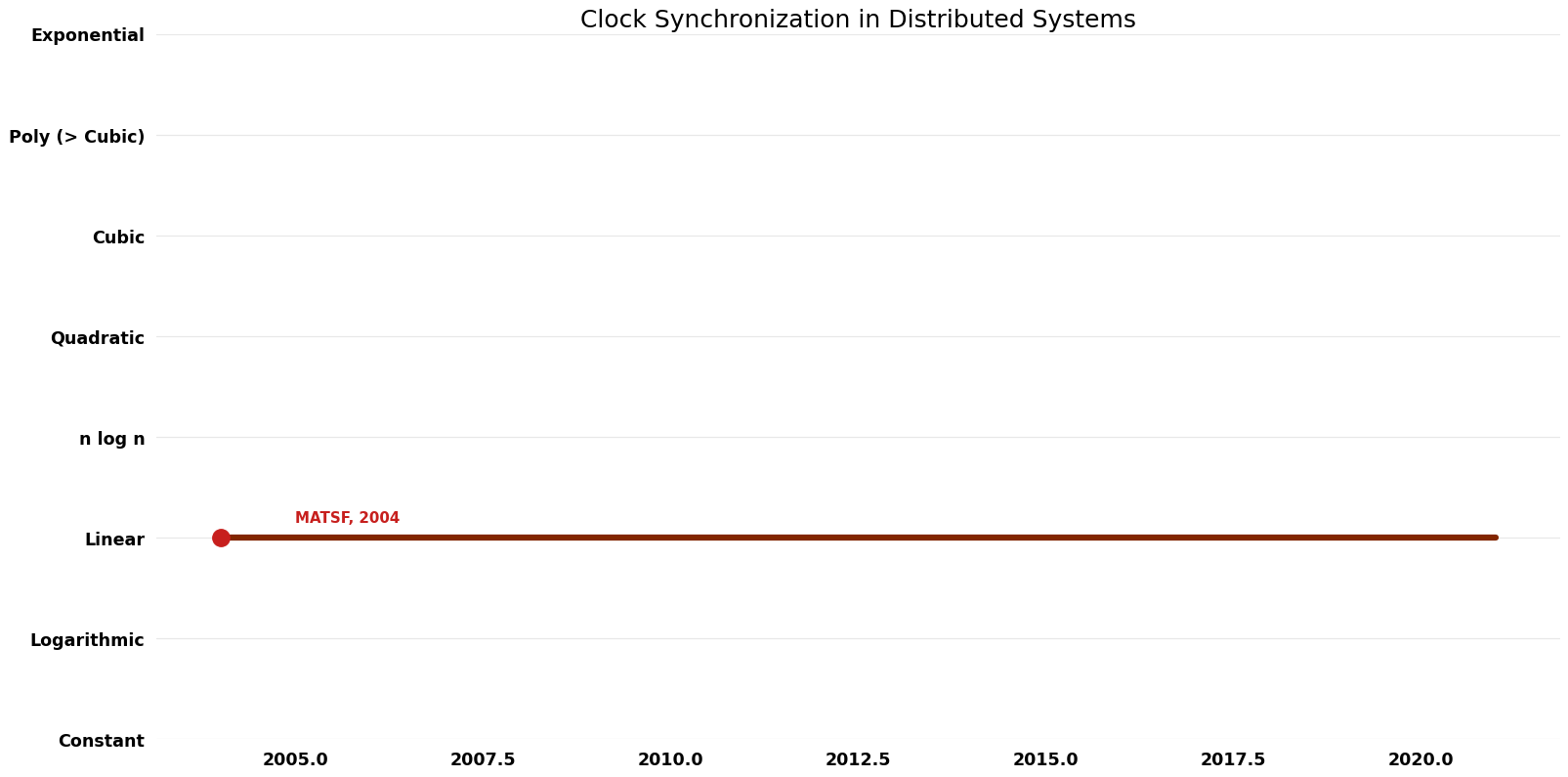Clock Synchronization in Distributed Systems: Difference between revisions
Jump to navigation
Jump to search
(Created page with "{{DISPLAYTITLE:Clock Synchronization in Distributed Systems (Clock Synchronization in Distributed Systems)}} == Description == The difference between the largest and the smallest clock values among all stations in a Mobile Ad Hoc Network (MANET) is called the maximum clock offset. The goal is to minimize the maximum clock offset. == Parameters == No parameters found. == Table of Algorithms == {| class="wikitable sortable" style="text-align:center;" width="100%"...") |
No edit summary |
||
| (3 intermediate revisions by the same user not shown) | |||
| Line 6: | Line 6: | ||
== Parameters == | == Parameters == | ||
$n$: number of nodes in network | |||
== Table of Algorithms == | == Table of Algorithms == | ||
| Line 24: | Line 24: | ||
|} | |} | ||
== Time Complexity | == Time Complexity Graph == | ||
[[File:Clock Synchronization in Distributed Systems - Time.png|1000px]] | [[File:Clock Synchronization in Distributed Systems - Time.png|1000px]] | ||
Latest revision as of 10:11, 28 April 2023
Description
The difference between the largest and the smallest clock values among all stations in a Mobile Ad Hoc Network (MANET) is called the maximum clock offset. The goal is to minimize the maximum clock offset.
Parameters
$n$: number of nodes in network
Table of Algorithms
| Name | Year | Time | Space | Approximation Factor | Model | Reference |
|---|---|---|---|---|---|---|
| ASP | 2005 | $O(n)$ | $O(n)$ (per node) | Exact | Deterministic | Time |
| Clock-sampling mutual network synchronization | 2007 | $O(n)$ | $O({1})$? (per node) | Exact | Deterministic | Time |
| MATSF | 2004 | $O(n)$ | $O(n)$? (per node) | Exact | Deterministic | Time |
